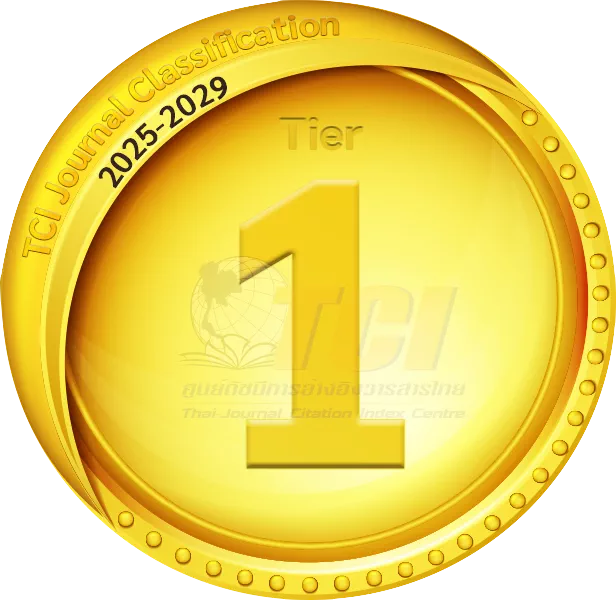The Measurement of a Multidimensional Learning Strategy in Upper Secondary School Students: Competing Model, and Predicting on Academic Achievement
Abstract
The purposes of this study were 1) to compare the efficiency of learning strategies measurement models consisted of (a) Weinstein and Palmer‘s Model, (b) Stevens and Tallent-Runnels‘s Model, (c) Cano‘s Model, and (d) Model developed by the researcher, and 2) to assess the prediction of measurement efficiency of students‘ learning strategies on academic achievement. The participants were 2,187 upper secondary school students from schools under the jurisdiction of the Office of the Basic Education Commission of Thailand. The instrument for data collection was a multidimensional learning strategies scale for upper secondary school students. In the results of this study, the model developed by the researcher was the most efficient model consisted of three dimensions: cognitive, affective, and skill strategies. This model was identified by 2=24.666 (df =17, p=.102), 2/df=1.451, GFI=.998, AGFI=.993, RMR=.008, RMSEA=.014, CFI=1.000, and AIC=100.666 (Saturated
AIC=110.000). The skill strategy, affective strategy, and cognitive strategy had significant positive effects on academic achievement. The standardized regression coefficients were .274, .241, and .227, respectively. Each
strategy accounted for 7.50, 5.80, and 5.10 percents of variance in the academic achievement. There was low error of prediction for .008, .007, and .010, respectively.
Downloads
How to Cite
Issue
Section
License
The submitting author warrants that the submission is original and that she/he is the author of the submission together with the named co-authors; to the extend the submission incorporates text passages, figures, data, or other material from the work of others, the submitting author has obtained any necessary permission.
Articles in this journal are published under the Creative Commons Attribution License (CC-BY What does this mean?). This is to get more legal certainty about what readers can do with published articles, and thus a wider dissemination and archiving, which in turn makes publishing with this journal more valuable for you, the authors.



